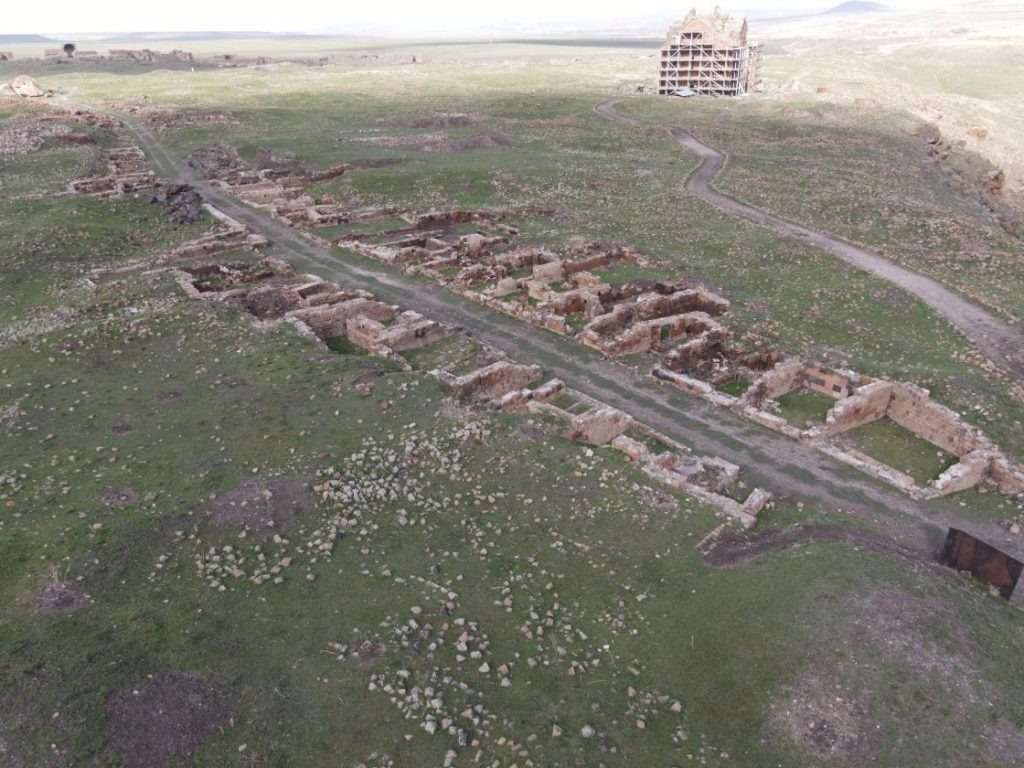The works, which will start in June in partnership with the General Directorate of Cultural Heritage and Museums of the Ministry of Culture and Tourism and Kafkas University, are planned to last for 12 months.

Excavations will be carried out to unearth the hidden history of the Ani Ruins, also known as the “World City”, “Cradle of Civilizations”, “One Thousand Churches” and “The City with 40 Doors”, which are on the UNESCO World Heritage List.
Ani, located in the middle of the two deep bottlenecks of the Arpaçay River, which formed the Turkey-Armenia border, seized in 643 after the domination of Urartu, Scythian, Persian, Macedonian, Slevkos, Arshaguni, Sassanid and Kamsaragan, was ruled by Bagratids between 884-1045, and by the Byzantines between 1045-1064.

Ani, which has hosted 23 civilizations since the day it was founded, and includes religious structures such as mosques, churches and cathedrals, each of which has a different beauty and historical value, as well as other priceless historical structures and cultural treasures, is the first gateway to Anatolia from the Caucasus which has a particular importance.
Sheds Light on the Past with Nearly 1500 Underground Structures

About 25 important structures have survived from Ani to the present day, consisting of city walls, mosques, cathedrals, palaces, churches, monasteries, fireside, baths, bridges and a partially destroyed closed passage. It sheds light on the past with nearly 1500 underground structures in 32 regions of 5 valleys, where a significant part of Ani’s population lived in the Middle Ages.
The excavation work to be carried out in the region with the partnership of the Ministry of Culture and Tourism, General Directorate of Cultural Heritage and Museums and Kafkas University (KAU) will start in June.

It is planned that the works to be carried out under the coordination of head of Kafkas University Faculty of Literature and Sciences, Department of Art History and Ani Ruins Excavation Head, lecturer Dr. Muhammet Arslan, will last for 12 months, including excavation, preservation, storage and publication works.
The head of the excavation, Arslan, pointed out to the AA correspondent that the Ani Ruins is a very important historical place around the world.
Arslan stated that for the first time in the history of Ani excavations, they are planning a 6-month excavation work.
“The excavation work in the field for 6 months will continue in the remaining 6 months in the form of warehouse and publication work. Excavations will be carried out around the Seljuk Bazaar, its residences, the big hammam and the first Turkish mosque in Anatolia, Ebul Menuçehr. We will not only carry out excavation work but also conservation work. We are also planning a conservation to protect both the artifacts unearthed in previous periods and the artifacts unearthed through our excavations.”
“Ani is a City Lying on the Ground with Many Areas”
Emphasizing that the Ani Ruins is very rich with its history and culture, Arslan said that the region was one of the most important centers of the Middle Ages.
Stating that Ani was the capital of the Bagratlı Dynasty in 961, Aslan concluded his words as follows:
“Some of the most monumental works in the city belong to the Christian religion and were built during this period. Then, in 1064, Ani met the Seljuks, and in this period, the second prosperity period of Ani began during the reign of Sultan Alparslan. Due to its location on the Silk Road, being the first point of transition from Central Asia to Asia Minor, and being the first gate to enter Anatolia from the Caucasus, the city became quite rich, this wealth contributed to the increase of the population and became a city of immigrants. According to the statements of the travelers, approximately 100-150 thousand population lived here, and as the trade became rich, the architectural culture also revived. It is possible to see all the works that should be in a city in Ani. Ani is a city lying on the ground, with many areas from palaces, hammams, mosques, fire temples and masjids to residences and commercial areas.” (AA)